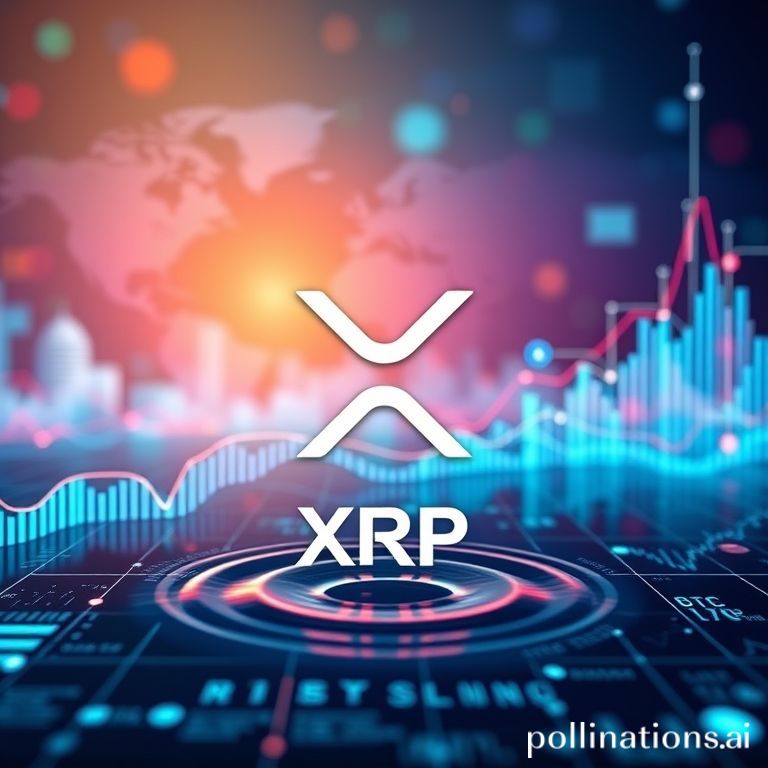
Ripple CEO Brad Garlinghouse has consistently advocated for XRP's value proposition stemming from its inherent utility within the global financial infrastructure, rather than purely from speculative trading. This perspective, distinguishing XRP from mere digital assets driven by market hype, has gained renewed attention as the cryptocurrency community eagerly anticipates critical regulatory decisions concerning Spot XRP Exchange-Traded Funds (ETFs).
A recent resurgence of Garlinghouse's past interviews on platforms like X highlights his long-held conviction. These discussions underscore XRP's potential to revolutionize traditional finance, not by outright replacing it, but by significantly enhancing its efficiency. Years after these initial statements, XRP continues its strategic push for broader adoption in international markets, with investor focus now intensifying on the US Securities and Exchange Commission's (SEC) impending rulings on various Spot XRP ETF applications.
The Foundation of Value: Utility Over Speculation
A popular video recently shared by XRP commentator JackTheRippler reignited interest in a 2017 CNBC Squawk Alley interview featuring Brad Garlinghouse. In this conversation, Garlinghouse articulated a profound insight: while speculation might temporarily inflate cryptocurrency valuations, true, sustainable growth is anchored in a digital asset's capacity to solve tangible, real-world problems and cultivate a robust user base. He emphasized that trillions of dollars in capital could potentially flow into XRP, driven by its practical application.
During the 2017 interview, a period predominantly characterized by speculative trading in the nascent cryptocurrency market, Garlinghouse provided a clear distinction for XRP. He asserted that XRP was not merely conceived as a tradable asset on exchanges but was fundamentally designed to serve a critical purpose: facilitating liquidity settlement between banks. At the time, he highlighted the staggering figure of over $27 trillion in capital globally held idle within correspondent banking accounts—funds necessary to bridge international payments between financial institutions. This vast sum represented a significant inefficiency within the global financial system.
RIPPLE CEO SAYS THAT #XRP SETTLES MONEY IN SECONDS!
TRILLIONS IN CAPITAL COULD POUR INTO XRPL. DRIVEN BY REAL TOKEN, BUILT TO TOKENIZE THE ENTIRE REAL ESTATE SECTOR! DYOR/NFA
— JackTheRippler © (@RippleXrpie) September 27, 2025
GET REAL TOKEN HERE: https://t.co/kYx7u3Ko4Z pic.twitter.com/seidvGLqdy
XRP's Role in Modernizing Global Finance
Garlinghouse's foresight envisioned XRP as a transformative solution capable of unlocking this dormant capital. By leveraging its inherent ability to settle transactions in mere seconds, XRP could dramatically enhance the efficiency and reduce the cost of cross-border payments. He clearly stated, "We use this digital asset called XRP to settle liquidity needs between banks," underscoring its pivotal role as an intermediary asset for efficient value transfer.
The challenges within the correspondent banking system are manifold, including slow transaction times, high fees, and the necessity of pre-funded nostro/vostro accounts, which tie up significant capital. XRP, as a bridge currency, offers a compelling alternative. It enables financial institutions to send payments globally in real-time, with minimal fees, without the need for pre-funding in multiple currencies. This not only streamlines operations but also frees up capital that can then be deployed more productively. This technological advantage is a core reason why many investors continue to view XRP as a distinct and valuable asset with substantial potential for integration into the global financial system.
The Anticipation: Spot XRP ETF Decisions
Today, while the underlying utility remains central, the conversation around XRP has broadened to include critical regulatory developments, particularly the highly anticipated outcomes of pending Spot XRP ETF applications in the United States. The successful approval of similar investment products for Bitcoin and Ethereum has established a significant precedent, leading many market observers and investors to consider XRP as the next logical candidate for such an offering, given its standing as a major cryptocurrency by market capitalization.
The SEC has recently implemented new, expedited listing standards designed to accelerate the approval process for crypto ETFs, significantly shortening the review window to 75 days or less. This regulatory shift has intensified the countdown for several prominent financial institutions. Key decision dates for these Spot XRP ETF filings are now firmly on the calendar, including Grayscale on October 18, followed by 21Shares on October 19, Bitwise on October 20, CoinShares and Canary Capital on October 23, and WisdomTree on October 24. Each of these dates represents a potential inflection point for XRP's market perception and broader institutional acceptance.
Implications for XRP and Traditional Finance
The eventual launch of a Spot XRP ETF could mark a pivotal moment, enabling the cryptocurrency to solidify its position alongside established digital assets like Bitcoin and Ethereum within the realm of traditional finance. Such an ETF would provide institutional and retail investors with regulated, accessible exposure to XRP without the complexities of direct ownership and custody. This enhanced accessibility and regulatory endorsement are expected to significantly boost XRP's liquidity, legitimacy, and overall market capitalization, aligning perfectly with Garlinghouse's initial vision of an asset driven by practical utility and widespread adoption.
The enduring relevance of Garlinghouse's statements, initially made years ago, underscores a foundational truth about sustainable value in the digital asset space: genuine utility forms the bedrock of long-term success. As the financial world increasingly embraces digital transformation, XRP, supported by its core use case and potential institutional adoption through ETFs, appears poised to fulfill its envisioned role in a more efficient and interconnected global economy.
At the time of writing, XRP was trading at approximately $2.79.
Featured image conceptualized for this article; chart data based on market trends.
